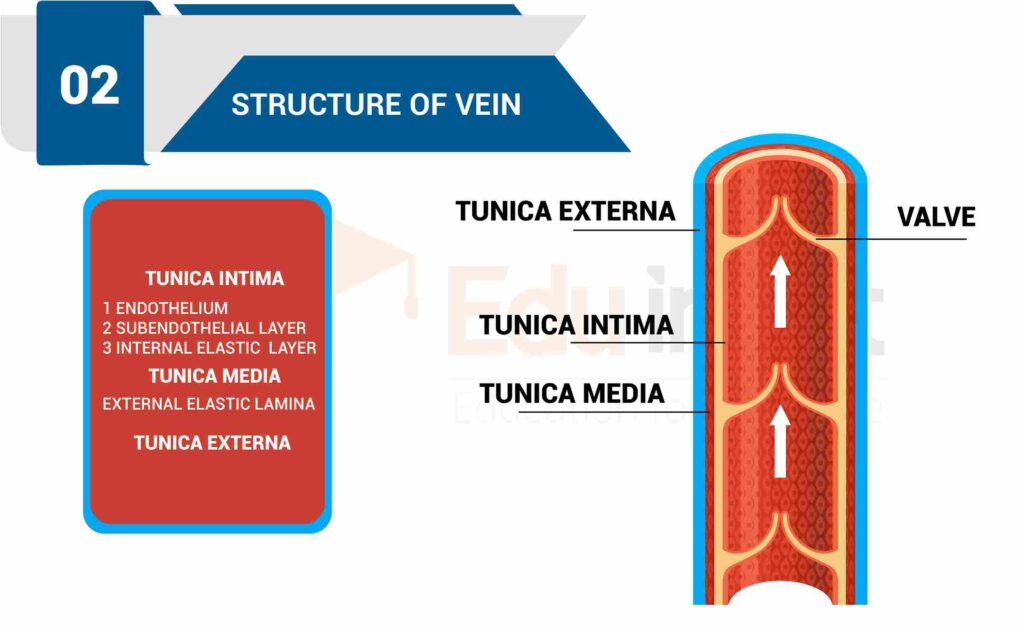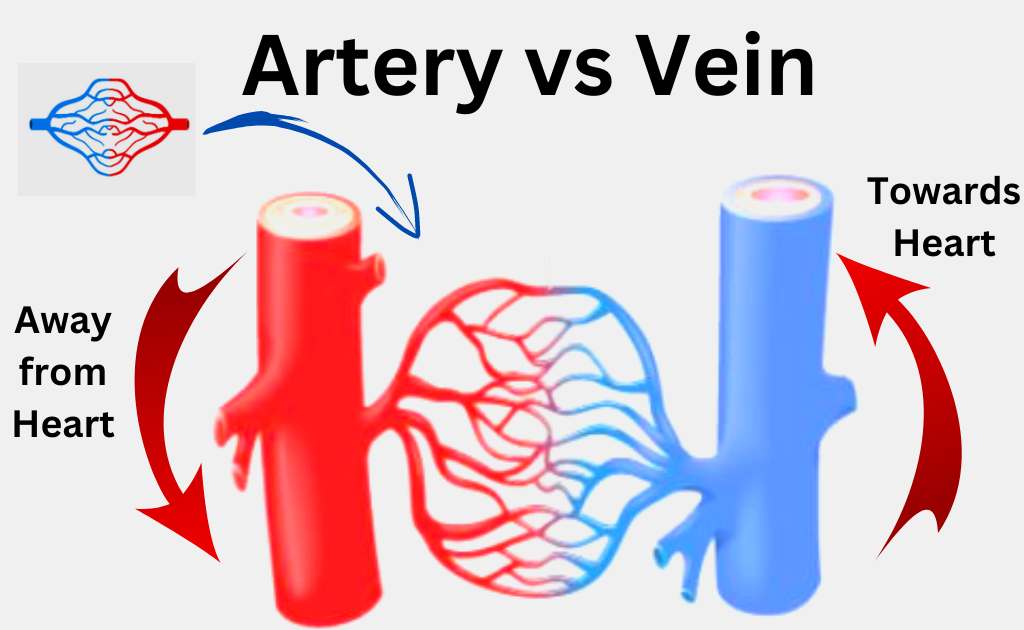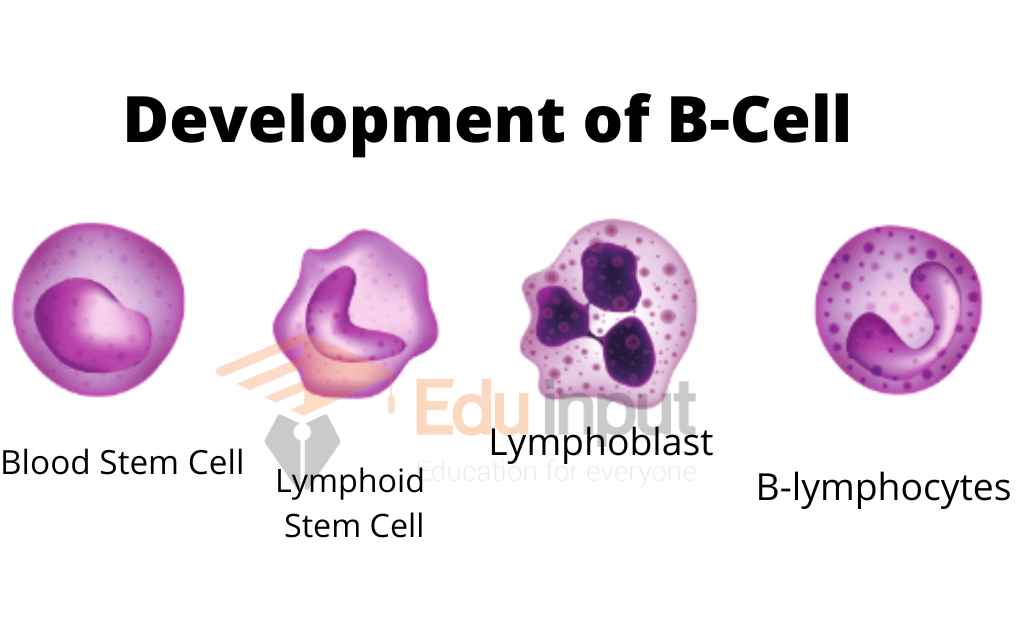What are Veins?-Structure, Types and Functions
Veins are blood vessels that carry blood away from the heart. They are located throughout our bodies and connect arteries to capillaries. Veins are responsible for transporting oxygenated blood back to the heart.
The walls of the veins have similar three layers to arteries. But the middle layer is relatively thin. The middle layer is slightly muscular and it has a few elastic fibers Semilunar valves are present in the veins.
The surrounding muscles (skeletal muscles) contract and produce pressure on the veins.
This pressure tries to squash the veins and push the blood upward. In this way, these muscles help in the returning of blood to the heart. The veins join to form larger veins. Ultimately, they form vena cava (inferior vena cava. and superior vena cava). The pulmonary vein brings blood from the lungs and opens into the left atrium.
Structure of Veins
The characteristics of veins include three layers of tissue that lack extensive musculature and valves to prevent backflow. The three layers of vein anatomy include:
• Tunica externa
• Tunica media
• Tunica intima

Tunica Externa
The tunica externa is the external covering of the blood vessels. This layer is usually thicker than the internal layers It is composed of endothelial cells and fibroblasts. It is made of connective tissue like collagen fibers and smooth fibers.
Tunica Media
The tunica media (Latin for “middle coat”) is the middle layer of blood vessels. It is thin compared to the outer two layers but is mostly made of connective tissue and smooth muscle cells. It also contains the nerves and arteries within the walls of the vessel.
Tunica Intima
The tunica intima is the innermost layer of the vein. It is made of one cell layer of endothelial cells and is very thin and delicate. The outer surface of the tunica intimates consists of an internal elastic lamina, containing some collagen fibers.
The external surface of the tunica is covered by the internal elastic lamina. The appearance of the tunica intima is thin and smooth and allows easy flow of blood.
Types of veins
There are two main types of veins;
Pulmonary Veins
The pulmonary circuit carries deoxygenated blood from your heart to your lungs.
Systemic Veins
The systemic vein carries deoxygenated red blood cells back to the right side of the heart, where they enter the pulmonary circulation for oxygenation. Most veins carry systemic blood.
The systemic vein is further divided into three types;
• Deep veins
• Superficial veins
• Connecting veins
Functions of veins
- Veins help in bringing carbon dioxide to the lungs so it can be exhaled
- Veins help in regulating blood pH by transporting carbon dioxides
- veins help in returning blood to the heart so it can continue circulating; veins help in acting as a blood reservoir, storing blood until needed again
- Veins help in carrying capacity vessels

 written by
written by 




Leave a Reply